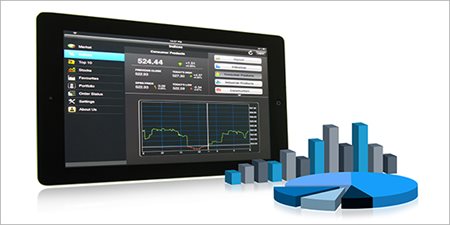eCommerce Trends & Statistics Revisited (Updated for Q2 2019)
By Lynette Sawyer
June 4, 2019
Artificial Intelligence, B2B, B2B Marketing, B2C, chatbots, customer engagement, customer experience, ecommerce, eCommerce Platform, Virtual Assistant
Trends and Stats. Whether you’re a marketer, a growth strategist, your company’s UI/UX designer, or perhaps a business analyst, the data and projections encompassed within trends are a crucial piece to your marketing and growth plans, user experience, and even business growth in new products, services, or markets. eCommerce is one such industry that relies on trends and statistics to stay competitive.
designer, or perhaps a business analyst, the data and projections encompassed within trends are a crucial piece to your marketing and growth plans, user experience, and even business growth in new products, services, or markets. eCommerce is one such industry that relies on trends and statistics to stay competitive.
With the sheer number of ways to shop and online retailers to choose from, it is more important than ever for eCommerce companies to be on top of the trends; not only to discover why shoppers may choose one store over another—more importantly, yours—but how to expand their business.
In today’s article, we update our previous post and profile the eCommerce Trends and Statistics for 2019.
Industry Growth
The online retail sector continues to be one of the largest segments of eCommerce. Although still dominated by the sale of apparel, the popularity of newer product categories such as fresh groceries and personal care are overtaking previous top categories, like consumer electronics.
eCommerce businesses should anticipate a 265% growth rate—from $1.3 trillion in 2014 to $4.9 trillion in 2021. Of greater interest is the fact that global eCommerce sales have been unrelentingly swallowing the worldwide retail market, so much so that by 2021, it will account for 17.5% of the total global retail sales. Overall global web sales came close to topping $3 trillion in 2018; increasing the online share of total retail sales north of 15%. This was a slowdown from 2017 when global web sales grew 21.3% from $2.00 trillion in 2016. Where consumers were concerned, their worldwide purchases totaled $2.86 trillion online in 2018; up from $2.43 trillion the previous year, according to earlier projections.
Whatever ups and downs you may have encountered this year, the eCommerce market continues to expand, charting expectations that will be bigger and brighter than ever. With new studies projecting that worldwide retail eCommerce sales will reach a new high by 2021, eCommerce has an auspicious future of a steady upward trend and no sign of decline. To be sure, 2019 stands to be one of the most inventive, transformative, and just plain interesting years in retail yet.
Trends
eCommerce is an expansive industry filled with plenty of retail contenders. With more competition comes more trends. If businesses want to stand out, they need to be willing to put in the work, know the most effective marketing strategies, genuinely connect with customers, and be on top of the latest trends. For 2019, we delve into the top global eCommerce trends, as well as trends that are specific to B2B and B2C
Top Global eCommerce Trends
Personalization and Customer Engagement
Predominantly and unsurprisingly—being the trend across digital—is personalization and customer engagement in eCommerce. Online retail lacks face-to-face interactions between businesses and consumers as compared to traditional retail shopping. Furthermore, most online stores don’t have someone who can, in real-time and in person, recommend products based on customers’ interests, tastes, and preferences. Companies need to leverage personalization opportunities through the entire shopping journey. By collecting customers’ data, such as search queries, page visits, and purchase history, businesses can create truly personalized experiences.
AI, Virtual Assistants (VAs), and Chatbots
Following personalization and customer engagement, eCommerce is prioritizing automation and enhanced customer service experience through AI, (VAs), and chatbots. This technology can help bridge the gap of no face-to-face interaction and handle several tasks typically assigned to a human. This includes managing inventory, dealing with customer inquiries, answering questions about products, or even tending to a complaint. As AI, VAs, and chatbots are data and tech forward, they learn from customer conversations and evolve to better assist in a user’s personalized eCommerce experience.
Interactive Product Visualization
We have all been in the situation where we are confident we know what we are buying online—such as a pretty top, perhaps. We carefully consider the quality and select the appropriate size. But, when it arrives, it turns out to be a tawdry rag that wouldn’t even fit your cat. Users are requesting—and expecting—the ability to interact with a product before clicking the ‘buy’ button. In today’s market age, online reviews and influencer promotions just aren’t cutting it. There was a time when consumers were satisfied with high-resolution images, but as we ushered in technology like virtual reality, 3D imaging, and even augmented reality, higher scrutiny of, and intensive interactions with products have become requisite. The same can be said for video, which tends to be more immersive, including a 360-degree online shopping experience.
B2B Trends
2019 is a significant year for B2B in the eCommerce industry. Online retailing is no longer just for B2C, as more businesses are using eCommerce trends within their B2B enterprise. It is projected that B2B eCommerce sales will increase worldwide to $6.6 trillion by 2020. The key factor? Personalization. Studies have shown that 50 percent of B2B buyers desired personalization when searching for online retailers to build solid business relationships.
Millennials are the new decision makers
The B2B realm is being rocked by the number of millennials entering the industry, even more so managing the decision-making. As it so happens, three-quarters of industry millennials are involved in—or running—the decision-making process of B2B purchases for their businesses. What does this mean for e-commerce? Millennials are digital giants. They rely on—nay prefer—digital interaction and experiences. As many as 83% of millennial B2B buyers expect online retailers to keep them well informed about product and services more than ever before. Revealingly, nearly 60% of millennials will stop doing business with a B2B online retailer based solely on a mobile experience that’s difficult to use and 79% expect B2B sellers to use eCommerce technology and insights to create personalized buyer journeys.
The B2B Embrace of Online Marketplaces
As customers continue to embrace more, and digital demands continue to change, online marketplaces are becoming more and more appealing. Going beyond your online retail space and selling on other marketplaces is the new norm. However, this comes with its own sets of challenges, such as branding, development work, and logistics. Before these online marketplaces actually eat up dedicated web stores, businesses need to be aware of and be prepared for what it will take to embrace online marketplaces in B2B actively.
“By next year, online marketplaces are expected to account for 40% of the global online retail market. In B2B, that impact is already being seen, especially in procurement. Gartner estimates that 75% of B2B procurement spending will happen via an online marketplace within the next five years, and the simplicity of doing business this way is likely to “create a butterfly effect on the e-commerce trend.”
B2C Trends
Try-Before-Buy Impacting Brick and Mortar Retail
One area that traditional retail shines over eCommerce is customers allowing to try—or try-on—the products that they’re browsing. A good portion of customers still prefer to shop in store for many reasons, primarily so that they can test out the product before they but it. Returns in eCommerce are nothing new; they can be annoying, stressful, and a hinderance to the overall business. One trend that is catching on to counteract the issue is where customers can buy a product and choose to ‘pay later’—which means after they receive it, they can keep it or return it.
An Appetizer for Apps
Mobile storefront apps are a big trend in B2C commerce for 2019. More businesses are turning to apps to complement their online retail website for added personalization, as well as convenience. This isn’t for the big marketplaces only. With the ease of access to app developers, small businesses are using storefront apps to drive sales and customer loyalty—and many more are moving with this flow.

Lynette Sawyer
Lynette Sawyer is a Web Project Manager for Falcon-Software, a digital web agency founded in 1994. For the last 13-years Lynette has been in various digital capacities and her expertise goes beyond Project Management. Lynette brings experience and knowledge in graphic design, marketing communications, project management, product management and engagement.